Iwata Asks: New Super Mario Bros 2.
- Today’s guests on Iwata Asks: Game Director Yusuke Amano and Art Director Masaaki Ishikawa.
- Amano previously appeared for the 25th anniversary of Super Mario Bros. and the development of Star Fox 64 3D.
- Ishikawa worked on New Super Mario Bros. Wii and Mario Kart 7.
- This time, development didn’t start with new mechanics, it started with course design. New mechanics were added in later.
- The team that researched course design for this game included participant in what is called “Mario Cram School.” It’s a group of developers from various departments who were shown how to make levels for Super Mario games.
- Mario Cram School was started by Takashi Tezuka to spread the knowledge of how to make Mario games among more individuals within Nintendo. Toshihiko Nakago, a longtime developer of the series, was also heavily involved.
- Some of the courses made by the Cram School involved double the staff usually used for Mario games. The results were fun and unique.
- Amano feels like he was tricked into being director of New Super Mario Bros. 2 by being subjected to the Cram School courses.
- He was chosen because there is another Mario game in development: New Super Mario Bros. U. Nintendo wanted to get both games ready as soon as possible.
- He had no designers to help him when he was first appointed!
- Ishikawa: “A little before Mario Kart 7, there was Super Mario 3D Land, which was close to a traditional Super Mario game in that it was made in a classic direction, so I thought, ‘Whoever’s in charge of the next 2D Super Mario game will have a real hard time!’”
- The team behind New Super Mario Bros. 2 consists of mostly developers who are new to the franchise. “Developers with experience in 2D Super Mario are working on Super Mario for the Wii U right now.” A large part of the team consists of members of Software Planning & Development Department.
- The guys at EAD Tokyo were instrumental in funneling ideas for the stereoscopic 3D in a side-scrolling Mario game.
- The game’s backgrounds use a blur effect in the background to simulate depth-of-field effects.
- Previous New Super Mario Bros. games didn’t have nighttime or evening levels; these have been added in New Super Mario Bros. 2.
- Giant Boo’s name is “Boohemoth.”
- Iwata says that at first glance it looks just like any other Mario game, but “I get the impression from when I actually played it that if you think it’s the same and don’t take it seriously you’ll run into trouble.”
- “The staff had a strong desire this time to think of tough things that people might even get angry about.”
- The stage I guessed was a “Minus World” level is called “Dash Mario.” You’re running and can’t stop, so you have to really hone your platforming skills. They’re a kind of “Special Stage.” Iwata says it’s like the cart levels in Donkey Kong Country.
- The coins idea started when Tezuka and Nakago were talking about how important it was to implement coins in a satisfying way. They decided that it might be fun to make a game that is more involved in terms of coins.
- One of the earliest ideas was for the Gold Block. They started with the coin block from Super Mario 3D Land and made it shoot out coins even faster when you’re running.
- The next idea was the Gold Koopa Troopa that leaves a trail of coins when you throw its shell.
- Tezuka liked the idea, and suggested, “How about one million coins?!”
- Tezuka actually happened to walk in at this moment, and talked about how smaller numbers like ten thousand or a hundred thousand wouldn’t be as impactful, so they decided to shoot for a million coins.
- It was this that led to the addition of tons of coin-related elements in each level.
- On Gold Mario: “One of the programmers suggested this idea, in past Mario games there was the P-Switch and by stepping on it the blocks would turn into coins. I was suggested that by using this mechanic we may be able to make a Mario power-up that would make it easy to collect coins. And when we made it, it felt great. From there we talked about making a new power-up.”
- Coin Rush mode was designed to give players more ways to rack up coins. You can double your coin count if you perform a certain way.
- Looks like you’ll need to replay the game to get to 1 million; it won’t just tally up your high scores. (Bummer!)
- They had to work really hard to convince Miyamoto that the Gold Block was a good idea. He wasn’t convinced that there was any good reason for it to just spit out coins.
- Two-player started off as an experiment, but Tezuka liked it so much, he pressed them to put it in the full game. They didn’t want to, though.
- The screen-panning from the Wii game wouldn’t work as well on two handhelds, so instead they created a system where the game determines a leader and has the camera follow that player. If the other player is left behind, he or she will enter a bubble.
- It’s impossible to collect every single coin, but two players can get a lot closer to achieving it.
- If your coin record in Coin Rush is higher than someone you StreetPass with, you’ll get a Crown Coin.
- SpotPass lets you compare your coin total with others’. Different regions can compete with one another.
- Additional stages will be added to Coin Rush mode as paid DLC. The idea is similar to what we saw with the e-Reader in Super Mario Advance 4: Super Mario Bros. 3. These won’t be part of the main story.
- They considered calling the game New Super Mario Bros. Gold. But since there are more levels than in either of its predecessors, and the levels can stand on their own even without focusing on coins, they decided to go with orthodox numbering conventions instead.
- “We wanted to make a solid, classic Super Mario game, so first we reconstructed the Super Mario stage elements, and then made 80 stages—no, more than that—and added in a bunch of the coin elements mentioned by Tezuka-san, and reconstructed the stages yet again…and I think it turned out to be a game that is fun to play.”
- “Raccoon Mario shows up this time. We had to show him in 3D, so we had to apply ourselves to all kinds of things like form and animation. I hope people will pay attention to that.”
- “[E]ven if you aren’t that great at video games, if you use White Raccoon Mario, which also appeared in Super Mario 3D Land, you can manage to clear it by yourself.”
- Iwata: “We’ll have to make the Wii U game even better!”
A hell of a lot of new information. I wanted to take these particular quotes out though.
- “We wanted to make a solid, classic Super Mario game, so first we reconstructed the Super Mario stage elements, and then made 80 stages—no, more than that—and added in a bunch of the coin elements mentioned by Tezuka-san, and reconstructed the stages yet again…and I think it turned out to be a game that is fun to play.”
- They considered calling the game New Super Mario Bros. Gold. But since there are more levels than in either of its predecessors, and the levels can stand on their own even without focusing on coins, they decided to go with orthodox numbering conventions instead.
Well there must be some sort of mistake or something must have been lost in translation. Those things couldn't possibly be true because this game is "clearly" a "lazy" "rehashed" "recycled" (did I miss any of the usual shtick?) Oh yeah, "uninspired" Mario game. Who do these people think they are to offer facts that might lead someone to believe otherwise.
http://gonintendo.com/?mode=viewstory&id=181897


















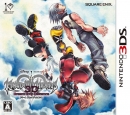
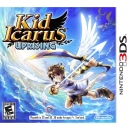
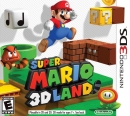









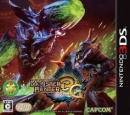
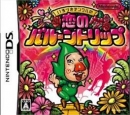






























 Essay Pro
Essay Pro